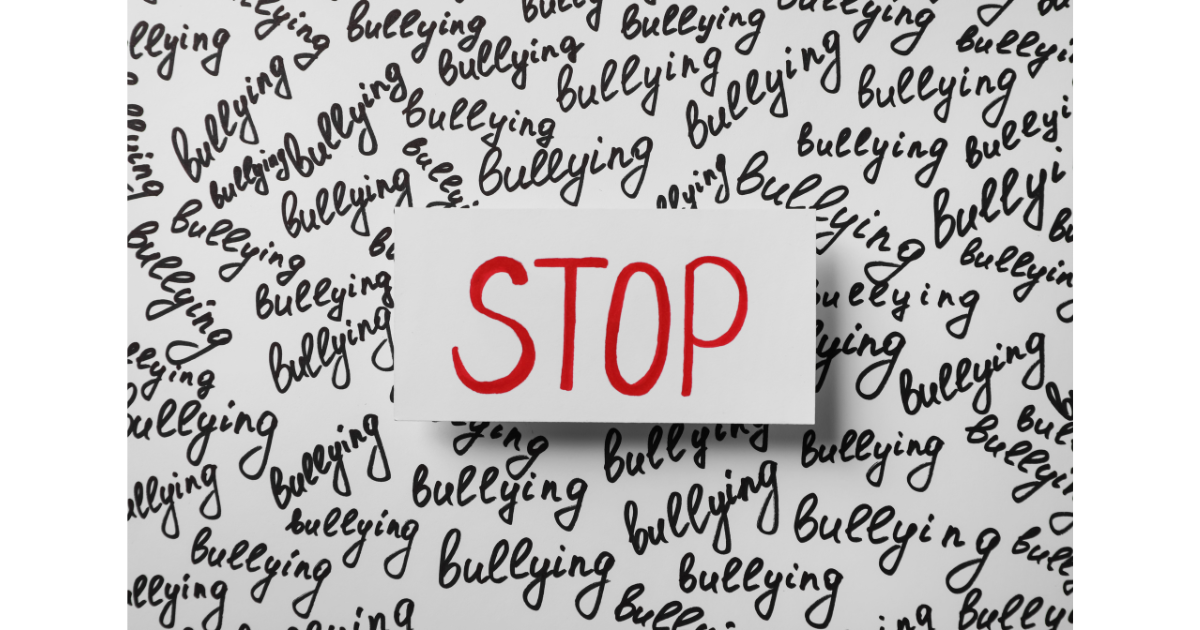Bullying and Mental Health
From the Playground to Retirement Communities (and Everywhere In Between)
Most people think of bullying as something kids deal with at school — but it doesn’t stop there.
Bullying shows up in workplaces, on social media, and even in retirement communities.
It isn’t “kids being kids.”
Bullying is a lifetime issue that affects mental health, relationships, and confidence — unless we recognize the patterns and do the work to break them in ourselves (and hopefully others, especially our kids).
What Counts as Bullying?
At its core, bullying is repeated, intentional aggression that uses a power imbalance to control or hurt someone. It can be:
Physical: hitting, shoving, damaging property
Verbal: insults, slurs, threats
Relational: exclusion, gossip, the “silent treatment”
Cyberbullying: harassment through texts, DMs, posts, or anonymous comments
What makes it different from ordinary conflict is the pattern: one person holds the power, the other is left vulnerable.
The Emotional and Mental Health Toll
In the moment, bullying floods your system with fear and shame. Your body switches into survival mode — scanning for danger, waiting for the next hit. Anxiety builds. Shame creeps in. Isolation takes hold. Anger simmers with nowhere safe to release it.
But the damage doesn’t stop when the bullying ends. The effects can linger for decades:
Self-esteem erodes, leaving you doubting your worth
Depression and anxiety settle in
PTSD-like symptoms surface — nightmares, flashbacks, avoidance
Relationships become complicated — either clinging out of fear of abandonment, or avoiding closeness altogether
It took me years to realize the bullying I experienced left deeper scars than my childhood sexual abuse.
Even after decades of therapy and earning degrees in psychology and mental health counseling, I had never considered the depth of that impact.
The focus of my therapy and the curriculum was always on the abuse — the “big trauma” — while the so-called “normal” childhood experiences like bullying were overlooked.
Seriously, nobody ever asked me about my experience as a victim of bullying — and they absolutely should have.
Looking back, it makes sense.
Bullying was tied directly to my social growth and self-esteem.
It shaped how I believed the world saw me — or didn’t see me. Those lessons became the framework for how safe I felt belonging anywhere and everywhere.
Cyberbullying: The New Frontier
And today, bullying has found a new home — online.
Cyberbullying doesn’t end when the school bell rings. It follows you home, multiplies through shares and screenshots, and leaves a permanent trail you can’t erase.
Almost half of U.S. teens report experiencing it, but it doesn’t just affect kids — adults are targeted too.
The Epidemic of Anonymous Cruelty
Even the sweetest post — a baby laughing, a dog doing tricks — can trigger vile, unnecessary comments. Anonymous “keyboard jockeys” say things they would never say face-to-face.
That’s the epidemic: people hiding behind screens, spreading cruelty with no accountability. And it hurts. Even if you remind yourself, this says more about them than me, the sting still lands.
The Comment Rabbit Hole
I’ll be honest — I fall into the comment section rabbit hole. I scroll hoping to see positivity, encouragement, humanity. And sometimes it’s there. But more often, I end up staring at cruelty that makes me shake my head.
I tell myself: “Stay out of the comments.”
But I go back, almost wishfully — maybe this time people will show up kinder. At least I did until I decided to limit my interaction with social media to a limited time during each day. (And what peace that’s brought me, I tell ya!)
The truth is, negativity sticks to us harder than positivity.
It feeds anxiety, shame, and that heavy “what’s wrong with people?” feeling. Over time, it can make us hesitate before posting or avoid sharing at all. Which is why sometimes the healthiest choice is the simplest: close the comments and reclaim your peace.
Bullying Across the Lifespan
School Years
Where most of us first encounter it — teasing, exclusion, fights, cruel jokes. This is when survival lessons first take root.
Workplaces
Bullying shifts form but doesn’t go away: exclusion from meetings, sarcastic “jokes,” unrealistic workloads. The impact is the same — stress, depression, burnout. Even bystanders feel it.
Retirement Communities
This is the part that shocked me. I learned bullying was a huge problem in a local retirement community — and it left me frustrated and depressed.
My first thought was: “Damn, that sucks!”
I had assumed people “grew up” with age. But often, who we were in junior high shows up again later in life — unless we’ve done the inner work to break the pattern.
In senior living, bullying can look like:
Cliques in dining halls
Excluding residents from activities
Gossip about health, money, or family
Dominating personalities taking over group spaces
Studies suggest that 10–20% of older adults in retirement communities are bullied by peers. The result? Loneliness, depression, and anxiety — right when people most need connection, dignity, and peace.
Bullying really does travel through life. Sadly.
Why the Brain Holds On
The brain is built to protect us. If it learns “Speaking up isn’t safe” or “People can’t be trusted,” those beliefs stick. They become unconscious rules running the show — until we recognize and challenge them.
What You Can Do About It (At Any Age)
Bullying doesn’t just happen to us — it happens around us and sometimes through us. Here’s what you can do:
If You’re On the Receiving End
Document it — keep screenshots, dates, details
Set boundaries: “I’m not engaging with sarcasm. Say it directly.”
Find allies — coworkers, friends, family
Step away — logging off toxic spaces is self-care, not weakness
If You’re a Bystander
Remember, silence fuels bullying.
Direct: “That’s not okay.”
Distract: Change the focus
Delegate: Report it
Delay: Check in: “I saw what happened. You didn’t deserve that.”
If You Catch Yourself Being Mean
We don’t talk about this enough. If you notice yourself gossiping, snapping, or posting harsh comments:
Pause: What’s really going on with me right now?
Ask: Am I unloading frustration on someone who doesn’t deserve it?
Redirect: Journal, walk, vent in a safe way
Make amends when you can — owning it breaks the cycle
Healing and Rebuilding
Bullying isn’t just a childhood problem.
It’s a human problem — one that can follow us from playgrounds to offices to retirement homes. Its scars are real, and for many of us, they cut deeper than we’d like to admit.
But awareness gives us power. When we recognize the patterns — in ourselves, in others, in our communities — we can interrupt them. We can heal, set boundaries, and create spaces where kindness is the norm.
If you’ve been bullied — at 7, 17, 47, or 77 — you’re not alone. The pain is real.
And so is your ability to rebuild. Every step toward reclaiming your self-worth is an act of courage.
Healing doesn’t mean forgetting; it means teaching your brain a new story about safety, belonging, and worth.
Are You Ready to Reclaim Your Voice?
You don’t have to face the echoes of bullying alone.
Whether the wounds are fresh or decades old, it’s never too late to rewire the patterns that silence you. Together, we can retrain your brain to feel safe being seen, heard, and valued again.

